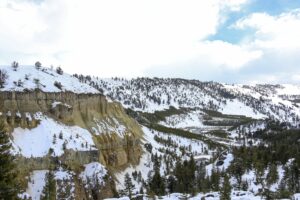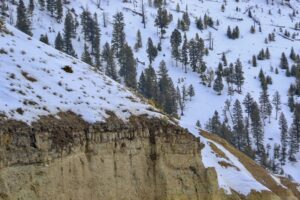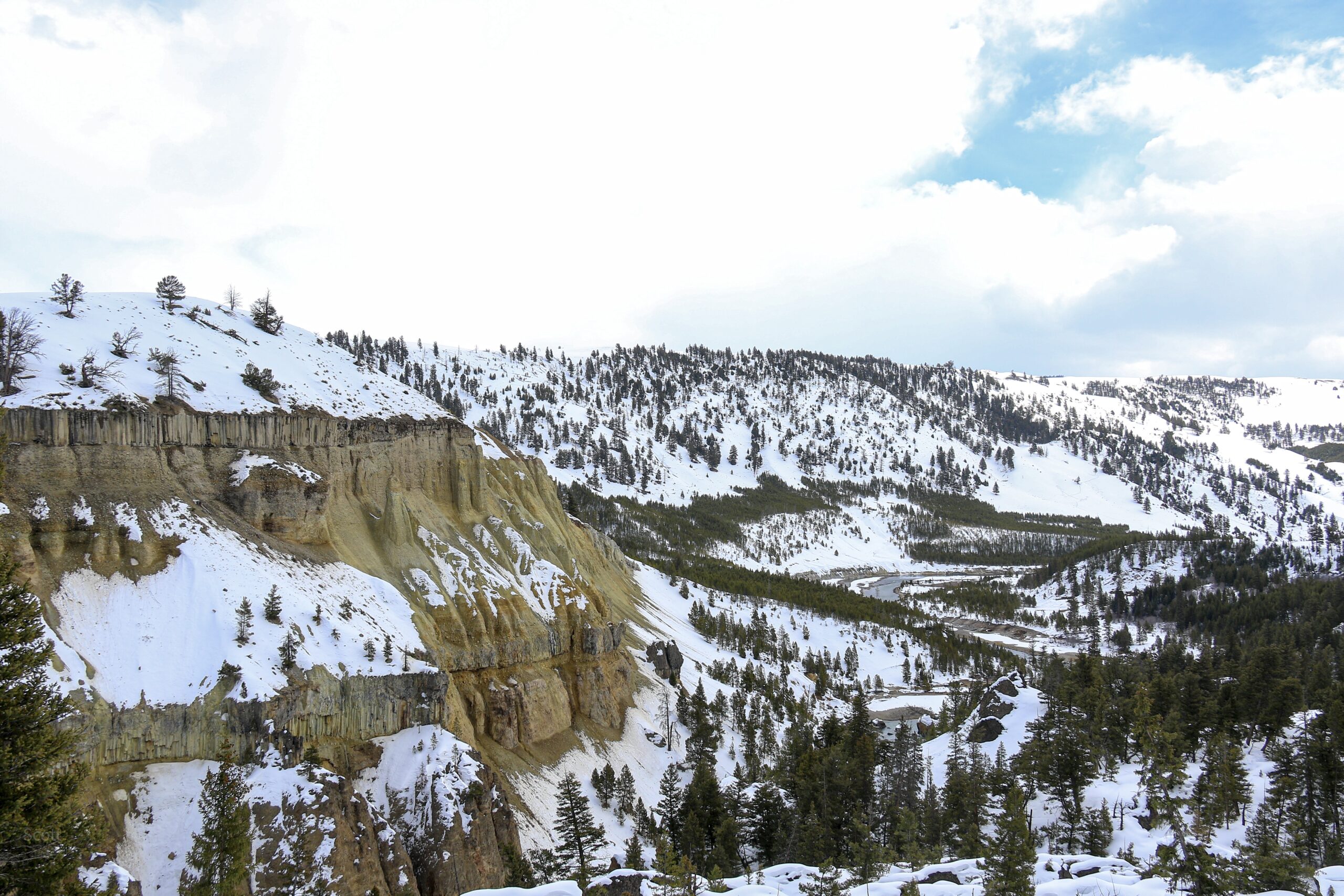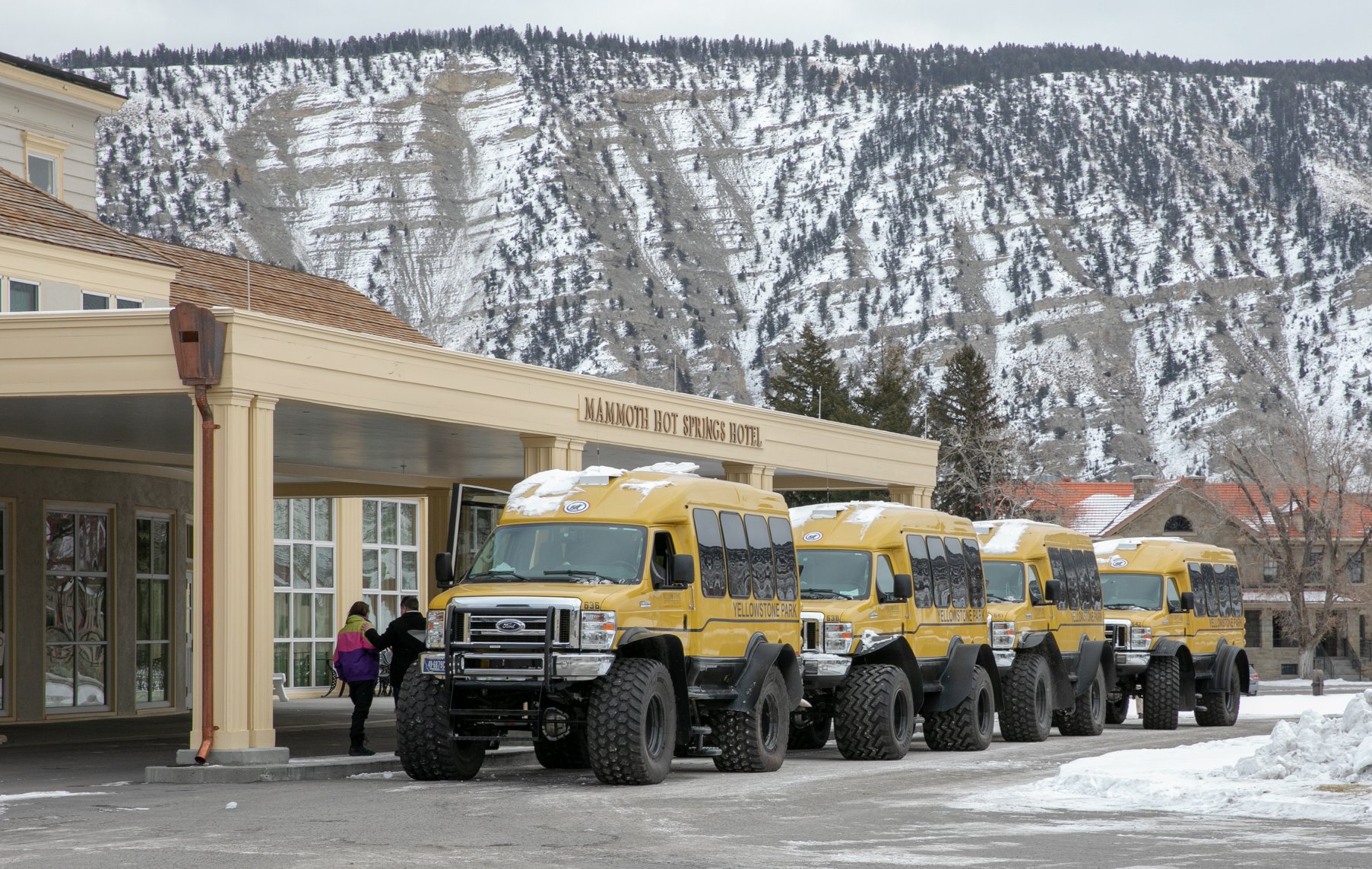Spotting wildlife in the sweeping vistas of Yellowstone seems like it should be an easy thing to do. Yet, even with spotting scopes and binoculars scanning all over the place, animals roaming in the distance are missed by the overwhelming majority of visitors to the park. For many who visit Yellowstone, this can be extremely frustrating, as they want to see wildlife in the park. This is one of the many reasons why, if you want to see everything possible, you need to book a trip with a guide or pick up a wildlife watching guidebook.
I grew up birding and looking for wildlife in Yellowstone. I have spent decades training my eyes to spot animals, whether hiking or driving. I can spot animals in the distance with ease and thoroughly enjoy pointing them out to others. This week’s Find the Animal Friday comes from a recent trip to the park, where my trained eyes were able to locate a next to impossible to see bighorn sheep, far across a Yellowstone River canyon.
ABOUT THE PICTURE
It was a sunny day in early Spring of 2023. I was giving a snowshoe tour up to Calcite Springs and Tower Fall to a handful of university students on Spring Break. They came to Yellowstone in hopes to see the sights, but were limited in their potential adventures due to the annual closures of roads and the end of snowcoach adventures into the interior for the year. Looking for something unique to do in the park before their trip ended, they booked a hiking trip with me.
We snowshoed up the road to Tower Fall, stopping at Calcite Springs for the view, watching bison near Rainy Lake and taking in the sights, sounds and smells of the park. After reaching the frozen waterfall, we started heading back down the closed, snow-covered road. Along the road, a view of the Yellowstone River emerges, showing off the river, as well as the unique geology.
The view shows off the following, as written by the USGS:
About halfway up the canyon walls of the Yellowstone River, and easily visible across the river from the road (especially from the Calcite Springs overlook), are a pair of dark, horizontal layers with a well-defined columnar structure (formed due to slow cooling of hot material). These are lava flows known as the basalt of the Narrows and that erupted about 1.3 million years ago—roughly the same time as the formation of second cycle caldera-forming eruption, the Henrys Fork caldera, southwest of Yellowstone National Park in eastern Idaho. The two lava flows are separated by a thick accumulation of gravels, including from glacial deposits, and they are overlain by more glacial debris. Similar flows of columnar basaltic lava are also present along the road. Named the Junction Butte Basalt, this flow erupted about 2 million years ago, after the formation of, and outside, the Huckleberry Ridge caldera—the first major caldera-forming eruption in the Yellowstone region 2.1 million years ago.
I know the area quite well and also know that this is where animals, from bighorn sheep and bison, to bears and wolves, are spotted. The bears and wolves were going to be extremely rare to see on this day, I knew that the chances of spotting a bighorn sheep were decent. As we walked down the snowy road, I scanned the cliffs, looking for any sign of an animal. Then, I noticed a slight change in the color near the cliff’s edge. I stopped walking and watched a bit more, seeing slight movement. Taking out my binoculars, I confirmed that there was an animal across the way.
It was a lone bighorn sheep, slowly meandering along the cliff, eating exposed grasses from the melting snow. I pointed it out to my clients, who wondered how on earth I spotted it from such a distance. I shared with them my life of birding and wildlife watching, which helped me see the bighorn sheep on this day.
Can you spot the lone bighorn sheep in the image below? The first picture is exactly how we saw the bighorn sheep, with no zoom used on my camera.
As always, click on the image to see it larger.

Can’t spot it? Try locating it in the image below and then looking back at the first image.

Want the Best Wildlife Watching Tips and Locations In Yellowstone National Park?
Pick up a copy of my guidebook, full of everything you need to know to spot wildlife like a local.
In the book, I even share how to train your eyes before your trip to be able to spot wildlife like a pro.
You definitely will want a copy of this book.




